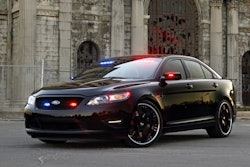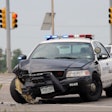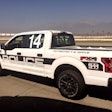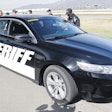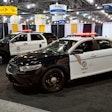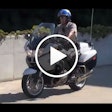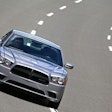A powerful East Coast blizzard closed major airports and transit lines, after Christmas Day, and brought police first responders out to help.
New Jersey State Police troopers brought water and food to diabetics marooned on two passenger buses on the Garden State Parkway in Monmouth County. And a robbery at a Kohl's jewelry counter turned deadly, when fleeing suspects fatally shot Woburn PD's Officer John Maguire after almost 18 inches of snow had fallen.
Weather is a hazard that must be managed by law enforcement officers, especially when driving patrol vehicles. With that in mind, we turned to Lt. Keith Wilson, who oversees the Michigan State Police's Precision Driving Unit. We asked Lt. Wilson for a few suggestions, so officer safety will be top of mind when operating your vehicle in nasty weather. Read his six points of guidance:
Slow down and plan ahead: How much an officer should slow down depends on the vehicle, the road conditions, the driver's abilities and experience. Slowing down allows officers to better analyze the situation and answer questions such as, "Can my vehicle stop at any point in time if it needs to avoid something ahead?" Also, "Can I make the turn I need to make?"
Inspect/test your vehicle: Lt. Wilson advises that officers make sure their cruiser's tires are properly inflated. Make sure exterior lights are clean and visible to oncoming and following traffic. Make sure wipers are in good shape and you have adequate fluid for keeping the windshield clear. Brush snow off the windows. And make sure your brakes are working properly.
Think twice before initiating pursuits: Pursuits are inherently risky situations. Inclement weather raises the level of risk to officers and the public. Pursuing a fleeing vehicle when the weather and road conditions are poor is usually not a good idea. However, the officer will have to make the final decision based on the circumstances at hand.
Avoid skid-control driving: If an officer finds him or herself in a skid after sliding on a piece of icy roadway, they need to use fast hand-over-hand steering inputs to steer the car in the direction they want to go. However, the best method of skid control is driving to avoid situations such as this.
Don't pump your brakes: You should know your car. If you have anti-lock brakes, you should not pump your brakes. You should hold your pedal to the floor until your vehicle stops. If you do not have anti-lock brakes, you should gently pump or modulate your brakes to slow your vehicle to a stop.
If stuck in a snow bank, call for reinforcements: Have the patrol car towed from the snow bank by a professional. This will prevent damage to the drive train and reduce the chance of injury to the officer.









